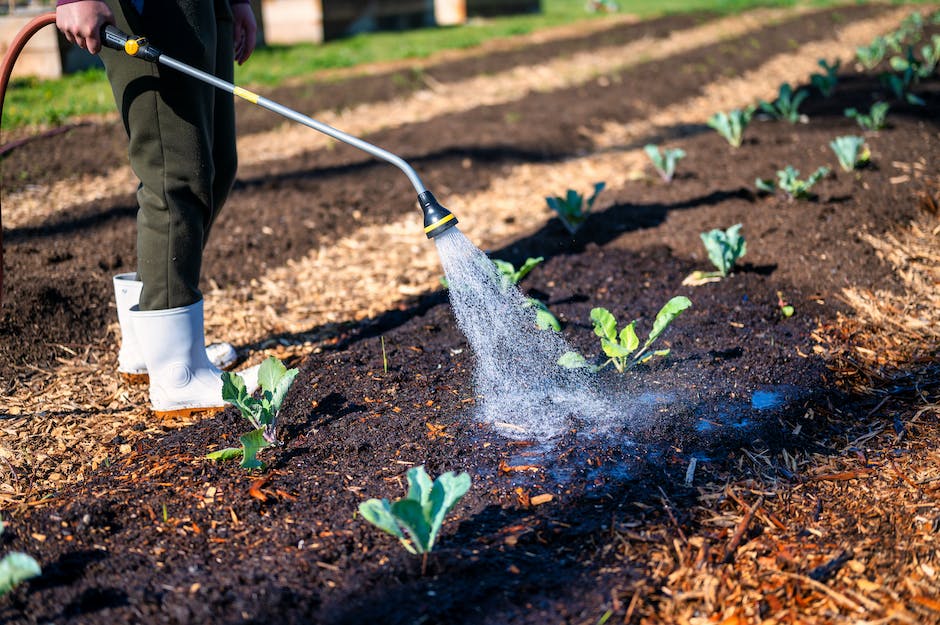Essentials for Plant Growth: A Guide

Understanding and satisfying a plant’s needs is crucial for their optimal growth and flourishing. This entails a harmonious blend of nourishment through essential nutrients, including primary nutrients like nitrogen, phosphorus, and potassium, all of which play a vital role in various aspects of plant development. This guide also aims to underline secondary and micronutrient necessities that are often overlooked. Simultaneously, one must not underestimate the significance of external factors like light and temperature. These are indispensable for photosynthesis and overall plant metabolism, and variations in these can immensely impact plant growth. Furthermore, our understanding of proper watering practices and choosing the right type of soil for different types of plants complements the knowledge of plant needs. Factors like pH, soil texture, and water retention also significantly influence plant health.
Understanding Essential Nutrients
Essential Nutrients: Pillars of Plant Growth
Plants, like any other living organisms, demand certain essential nutrients for growth and sustainability. These nutrients, obtained from the surrounding environment, primarily include primary macronutrients, secondary macronutrients, and micronutrients.
Primary Macronutrients: The Tripartite Base
Primary macronutrients are the main building blocks for plants. Comprising nitrogen (N), phosphorus (P), and potassium (K), these elements make up a large portion of the plant’s composition and significantly influence growth and development.
Nitrogen is crucial for chlorophyll synthesis, directly influencing a plant’s ability to photosynthesize and translate light into chemical energy. A nitrogen deficiency can quickly arrest plant growth and impair overall vitality.
The second primary macronutrient, phosphorus, plays a fundamental role in energy transfer and storage, as well as in the synthesis of nucleic acids. A deficiency of phosphorus may result in stunted plant growth and delayed maturation.
Potassium, the third primary macronutrient, is instrumental for the regulation of various plant processes and for the activation of enzymes. Lack of potassium can lead to diminished growth, susceptibility to disease, and crop yield reduction.
Secondary Macronutrients: The Supporting Triad
Secondary macronutrients, encompassing calcium (Ca), magnesium (Mg), and sulfur (S), are as critical as primary nutrients but are required in smaller amounts. They facilitate the formation of essential plant structures and substances.
Calcium is essential for cell wall function and structure, playing a vital role in cell growth and division. Its absence can lead to stunted root development and weak plant structure.
Magnesium, a central atom in the chlorophyll molecule, plays a significant role in photosynthesis and enzyme activation. Its deficiency can cause chlorosis, a condition that yellows plant leaves.
Sulfur forms a crucial component of certain amino acids and vitamins. A lack of sulfur can mirror nitrogen deficiency symptoms, harming overall plant growth and development.
Micronutrients: The Minute Yet Mighty
Although required in trace amounts, micronutrients, including iron (Fe), boron (B), copper (Cu), molybdenum (Mo), manganese (Mn), and zinc (Zn), have vital roles in plant growth and development.
Iron facilitates chlorophyll synthesis, while boron ensures the integrity of cell walls. Copper is necessary for several enzyme systems, and molybdenum is vital for nitrogen fixation in leguminous plants. Manganese promotes the oxidation-reduction process, and zinc is needed for enzyme activity and protein synthesis. Though required in minute quantities, any deficiency in these micronutrients might lead to deleterious effects on plant health and productivity.
Indeed, each of these nutrients stands as a testament to the intricate and delicate balance of nature. They underscore the importance of nutrient cycles in ecosystems and the profound interconnectedness of all life forms. As research progresses, so does the understanding of these fundamental elements, further enthralling us in the eternal quest for knowledge.

Importance of Light and Temperature
Understanding the Impact of Light and Temperature on Plant Growth
Continuing our journey into the science of plant growth and development, we now turn our attention to two crucial environmental factors: light and temperature.
Appropriate lighting conditions play a pivotal role in the life of a plant. Light serves as the primary energy source for photosynthesis, the process by which plants convert sunlight, water, and carbon dioxide into glucose and oxygen. This process not only fuels their growth but also forms the basis of life on Earth as we know it. A fascinating aspect of photosynthesis is that it predominantly uses specific wavelengths of light, primarily in the blue and red spectrum.
Blue light, typically with a wavelength around 450 nanometers, is crucial for the regulation of stomata—the tiny openings on the leaves that allow for gas exchange—and the promotion of vegetative leaf growth. In contrast, red light, approximately 660 nanometers in wavelength, triggers a response from a special type of phytochrome in the plant that encourages blooming and fruit production.
Turning now to the concept of photoperiodism, the response of a plant to the relative lengths of daylight and darkness, it becomes evident that light’s influence extends even into the domain of plant behavior. Short-day plants, such as chrysanthemums, require long nights to induce flowering, while long-day plants, including many types of lettuce, flower when nights are short. Interestingly, some plants are indifferent to day length and bloom regardless—a testament to the diverse adaptability of the plant kingdom!
Equal in importance to light for plant growth and development is temperature. Fluctuations in temperature guide many plant processes such as germination, flowering, and fruiting. For instance, seeds of many plants require a period of cold, or vernalization, to break dormancy and begin germination.
Specific temperature ranges, known as cardinal temperatures, dictate a plant’s growth speed. Optimum temperatures allow for the most rapid growth, while minimum and maximum temperatures delineate the lower and upper limits for growth. Elevated temperatures do, however, significantly increase the rate of respiration in plants, leading to a faster usage of stored sugars and, subsequently, a decrease in overall plant biomass.
Heat shock proteins, produced in response to sudden temperature increases, seek to protect plant cells from thermal damage. When confronted with cold stress, plants employ various adaptive mechanisms such as altering membrane lipid composition or producing antifreeze proteins to prevent ice formation within their tissues.
In essence, light and temperature masterfully choreograph an intricate dance of life. They delicately balance a vast array of physiological adjustments that ultimately culminate in a plant’s survival, growth, and reproduction. From the glowing rays of the sun to the cool whisper of the night, these factors shape the world of plants in astoundingly complex ways. Understanding and harnessing this knowledge can contribute exponentially to our goals in areas as diverse as agriculture, conservation, and climate science.

Water and Soil Requirements
With a clear understanding of the essential roles that macronutrients, micronutrients, and environmental factors such as light and temperature play in plant growth and development, attention should be directed towards the significance of water as a considerable part of the plant’s physiological process.Water’s role extends far beyond just a medium through which nutrients are absorbed and transported. Water is a reactant in photosynthesis, which is remarkably, the process through which almost all life survives. Approximately 90% of a plant’s mass consists of water, and it is this high water content that keeps plants turgid and assists in the upward transport of water and nutrients from the roots to the various parts of the plant.
Optimal water availability is fundamental to a plant’s survival. In times of water scarcity, plants may wilt as a means to reduce water loss, and during flooding or excessive rainfall, root function can be significantly inhibited due to a lack of oxygen.
Irrespective of the type of plant, the water demands hinge upon its growth stage, growing environment, and specific species environment adaptation. For example, succulent plants have evolved to store water in their leaves and stems, tailoring their growth habits to more arid environments. Comparatively, aquatic plants are adapted to an overabundance of water.
The subject of water naturally leads us to soil condition—a fundamental component of determining optimal plant growth.
Soil, like water, is not just a medium for root anchorage but also serves as a reservoir for nutrients, air, and water. Good soil quality is typified by the ability to retain and drain water effectively—an attribute often linked to the soil’s texture and structure, which should ideally include an approximate equal distribution of sand, silt, and clay, often known as loam.
Soil pH properties are also critical, as they significantly affect the nutrient availability. Most plants flourish in slightly acidic to neutral pH (6 to 7), although specific plants may have particular pH preferences.
Aside from texture and pH, soil teems with microorganisms, these microscopic partners contributing enormously through decomposition of organic matter, nutrient cycling, and disease suppression. Soil inoculation with advantageous microorganisms (like nitrogen-fixing bacteria or mycorrhizal fungi) holds great promise for promoting plant growth whilst reducing reliance on synthetic fertilizers.
In essence, recognizing and meeting the optimal water and soil conditions for growth is an intricate dance of scientific consideration and observation, with the performance leading to the glorious act of plant growth and development. For those contemplating a foray into plant cultivation, be it for agriculture or ornamental pursuits, the study and understanding of these optimum conditions are not only beneficial, but also fascinating and rewarding.

The success of plant growth lies in the integration of multiple factors – from understanding the requisite nutrients to comprehending the role of light and temperature in plant metabolism. It’s equally essential to recognize the importance of the right watering practices and soil type, as well as keeping in check the soil’s pH level and water retention capacity, all of which can dramatically impact plant health. By gaining a holistic understanding of these factors, anyone can nurture a plant effectively, facilitating its growth and overall well-being. Indeed, anyone armed with these facts can transform a seed into a thriving, verdant plant, thereby epitomizing the sheer marvel that is nature’s life cycle.



